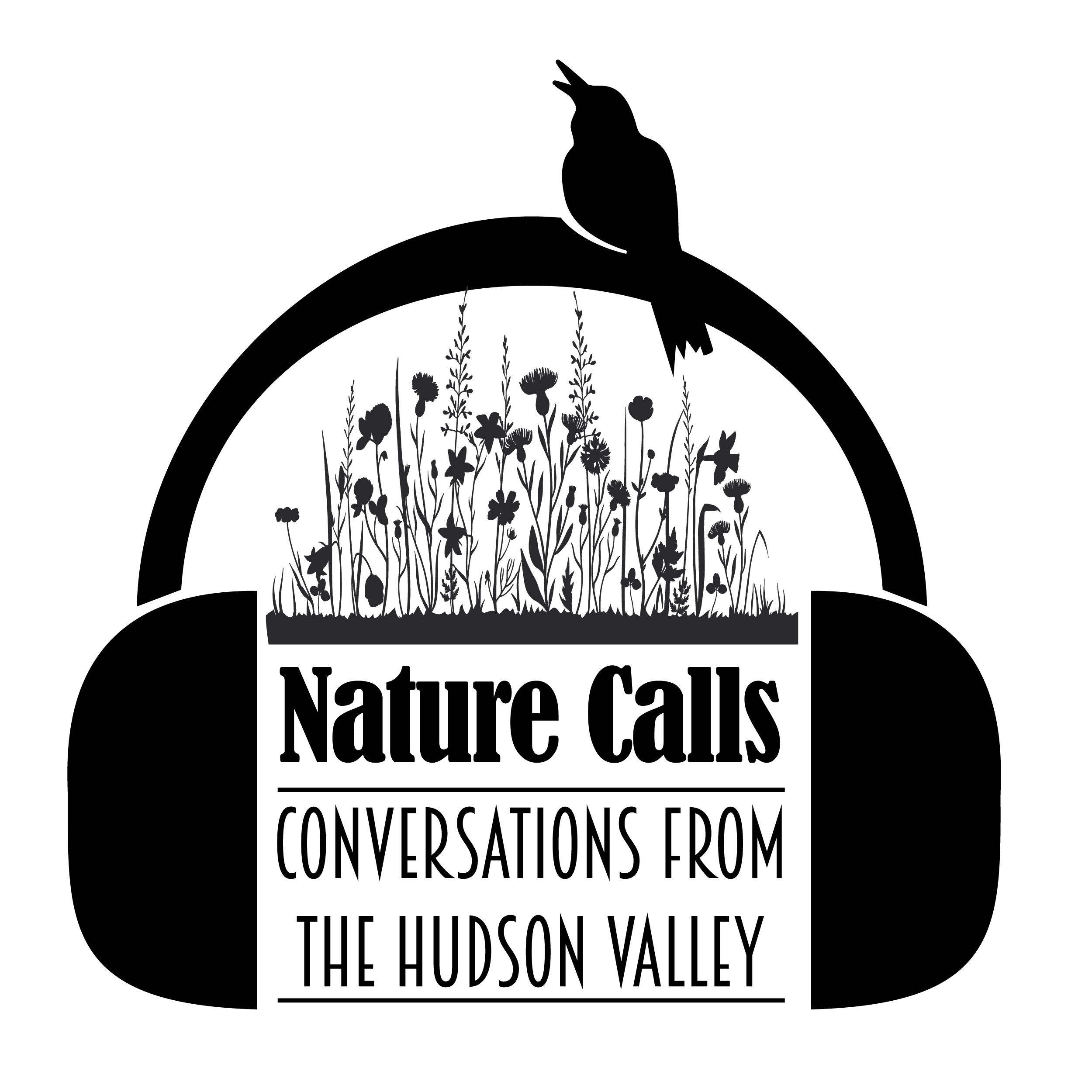Episodes
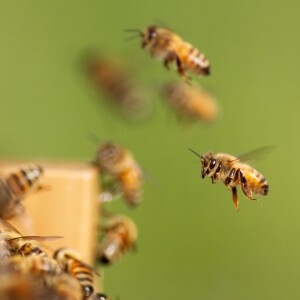
Thursday Jan 04, 2024
Episode 102: Hum of the Hive Retrospective (Part 1)
Thursday Jan 04, 2024
Thursday Jan 04, 2024
With this episode, we are introducing the first of our retrospective series. These periodic episodes compile previously aired short segments on a specific topic. This one, features Master Beekeeper and podcast co-founder, Linda Aydlett and is all about honeybees.
This episode starts with some fascinating insights into how honeybees survive in winter. Their secret? They form winter clusters and shiver to keep each other nice and warm. Then stay tuned for the next segment to learn about the roles honeybees must fulfill within the hive. Linda describes the life of a Queen Bee, which turns out not to be as glamorous as the name might imply. As the only fertile egg layer, the queen bee is focused solely on perpetuating the colony. Learn about the importance of nutrient-rich royal jelly that helps the queen successfully perform her role.
But there’s even more! This episode concludes with a description of the worker caste of honeybees. They represent the largest number of bees in the hive. The role of the worker bees is to perform all the other functions required for the hive to thrive. Unlike the queen bee, the worker bee’s role evolves over her relatively short lifespan from a nurse bee to a house bee, and finally to a field bee. This segment focuses mostly on the house bee as it transitions to a field bee. Fascinating indeed!
Hosts: Tim Kennelty and Jean Thomas
Guest: Linda Aydlett
Photo by: Damien TUPINIER on Unsplash
Production Support: Linda Aydlett, Deven Connelly, Teresa Golden, Xandra Powers, and Annie Scibienski
Resources
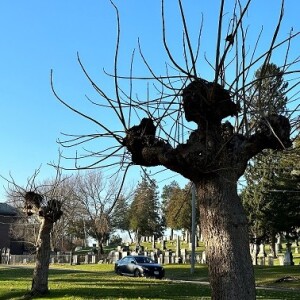
Thursday Dec 28, 2023
Episode 101: Pollarding
Thursday Dec 28, 2023
Thursday Dec 28, 2023
William Bryant Logan re-joins the Nature Calls: Conversations from the Hudson Valley podcast in a fascinating discussion about pollarding, a pruning practice. Bill is the author of Sprout Lands, Oak, Air, and Dirt, the last of which was made into an award-winning documentary. In addition to being the executive director of Landis Arboretum, he is on the faculty of the New York Botanical Garden. He has spent the last three decades working in trees. He is a certified arborist, and founder and president of Urban Arborists, Inc.
In earlier times, regions could not prosper without its inhabitants knowing how to cut their trees so they would sprout again. Pruning the trees didn’t destroy them. Rather it created healthier, more sustainable and diverse woodlands.
Pollarding is a pruning system involving the removal of the upper branches of a tree, which promotes the growth of a dense head of foliage and branches. The practice was a common practice in Europe since medieval times, and takes place today in urban areas worldwide, primarily to maintain trees at a determined height or to place new shoots out of the reach of grazing animals.
Traditionally, people pollarded trees for fodder (to feed livestock) or for wood. Fodder pollards produced "pollard hay" for livestock feed; they were pruned at intervals of two to six years so their leafy material would be most abundant. Wood pollards were pruned at longer intervals of eight to fifteen years, a pruning cycle tending to produce upright poles favored for fencing and boat construction. Nowadays, the practice is typically used for ornamental trees.
Pollarding tends to help trees live longer by maintaining them in a partially juvenile state and by reducing the weight and windage of the top part of the tree. Older pollards often become hollow, so it can be difficult to determine age accurately. Pollards tend to grow slowly, with denser growth-rings in the years immediately after cutting.
Learn more about this practice in New York State on this episode of Nature Calls: Conversations from the Hudson Valley.
Hosts: Tim Kennelty and Jean Thomas
Guest: Bill Logan
Photo by: Teresa Golden
Production Support: Linda Aydlett, Deven Connelly, Teresa Golden, Xandra Powers, and Annie Scibienski
Recording
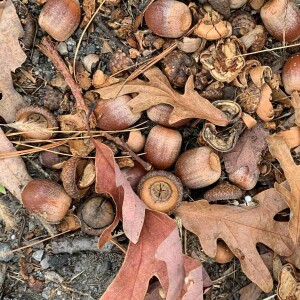
Thursday Dec 21, 2023
Episode 100: Oak Trees
Thursday Dec 21, 2023
Thursday Dec 21, 2023
William Bryant Logan joins the Nature Calls: Conversations for the Hudson Valley podcast to talk about Oak Trees in New York State. Having spent the last three decades working in trees as a certified arborist, Bill is the author of Sprout Lands, Oak, Air and Dirt, the last of which was made into an award-winning documentary. He is on the faculty of the New York Botanical Garden. He joins us for a two part discussion. The first is on oak trees. The second (up next) will be about pollarding.
Oaks are one of the oldest and most widely spread trees on earth. They existed well before humans, most likely between 40 million and 60 million years ago.
Did you know that there are nearly 600 species of oak trees. They all fall into two categories: white oaks (with rounded lobe leaves) or red oaks (pointed lobe leaves).
The highest population of oak trees can be found in North America, especially in Mexico, where about 160 species grow, and 109 of those are endemic. Ninety species live in the US. The national tree of America is the oak tree.
Oak trees are so resilient because their seeds are cased in hard shells (acorns). Acorns and leaves are coated with tannic acid, which also prevents fungi and insects from harming them.
All oaks produce acorns, but because they only ripen on adult trees, they symbolize patience and endurance.
An oak can produce ~10 million acorns during its lifetime, but only 1 in 10,000 acorns grows up to be another oak tree. The rest become a key food source for birds (e.g. woodpeckers, ducks, pigeons), small mammals (squirrels, chipmunks, mice), as well as larger mammals (deer, bears).
Acorns are nutritious and contain large amounts of protein, carbs, fats, phosphorus, potassium, calcium, and niacin.
Oaks played a crucial role in human history as well. Early humans built their homes, created tools, and constructed strong ships from oak wood. Furniture, flooring, and wine barrels are among many products that still use oak today.
Oak trees can either be deciduous or evergreen. They are more often evergreens in warmer climates with mild winters. Their canopy provides shade for plants and soil, a source of food to certain animals, and of course, oxygen to living organisms. As a keystone species, supporting many pollinators, an oak tree makes an excellent addition to any landscape.
Hosts: Tim Kennelty and Jean Thomas
Guest: Bill Logan
Photo by: Jean Thomas
Production Team: Linda Aydlett, Deven Connelly, Teresa Golden, Xandra Powers, and Annie Scibienski
Resources
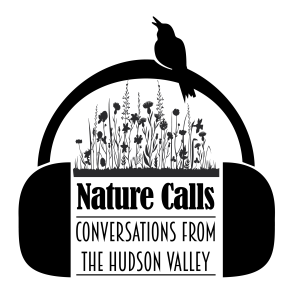
Thursday Dec 14, 2023
Episode 99: Old Growth Forests (Part 2)
Thursday Dec 14, 2023
Thursday Dec 14, 2023
Fred Breglia, executive director of the Landis Arboretum, located in Esperance, NY. He rejoins Nature Calls: Conversations from the Hudson Valley with a continuation of a discussion on Old Growth Forests. In addition to being known as the “Tree Man”, he has also been called the “Lord of the Rings”.
In this episode, we learn about the characteristics of old growth forests. They tend to have trees that are large including standing ones, snags, as well as large fallen/dead ones. ‘Ugly’ trees with scars show their ability to survive despite damage from wind, lightning, insects and other injuries incurred over long periods of time. There may be openings in the canopy that are created when older trees die. This results in sunlight hitting the forest floor encourage new growth that creates diversity in tree species and size of trees. When a tree blows over, the roots that are torn from the ground create pits and the fallen trunk/branches form mounds nearby, encouraging nutrients to return to the soil.
Nature is constantly changing the forest. Disturbances force a shift in the in the dominant species found within a forest. The life span of an oak can reach 500 years but there are some white cedar trees that are over 1000 years old. The age of a tree can be ascertained by coring which entails twisting a borer (which is a cross between a drill and a screw) into a tree. As the tip of the borer is hollow, it screws in around a pencil-sized section of tree. By counting the rings, the trees age can be determined as well as its growth rate over time. Comparing the ring lengths to weather records, scientists can learn how changes in climate affect how trees grown. Counting rings of fallen tree limbs can also support or confirm the age of the main trunk. Thus, we can think of trees in a forest as a growing library of information where there are many things to learn!
Like trees in a forest, take the time to stand tall, be proud, and enjoy the view as you listen to this episode.
Hosts: Tim Kennelty and Jean Thomas
Guest: Fred Breglia
Photo by: Teresa Golden
Production Support: Linda Aydlett, Deven Connelly, Teresa Golden, Xandra Powers, Annie Scibienski
Resources

Thursday Dec 07, 2023
Episode 98: Old Growth Forests (Part 1)
Thursday Dec 07, 2023
Thursday Dec 07, 2023
Do you “talk tree”?Have you ever wondered how old the beautiful trees in your woodlands or in New York State forests are? Then this episode is for you.
Fred Breglia joins Nature Calls: Conversations from the Hudson Valley in a multi-faceted discussion about Old Growth Forests. Fred is the executive director of Landis Arboretum located in Esperance, N.Y. Landis is an arboretum and public garden incorporating 300 acres and 10 miles of hiking trails in Schoharie and Montgomery counties in New York State. The grounds are open from dawn to dusk every day. Fred is also an award-winning certified arborist with decades of experience in the green industry. He is also a frequent speaker and educator. Capital District residents may know him as the “Tree Man,” a regular guest on WAMC’s Vox Pop Radio Show.
An old-growth forest (also known as a primary forest, virgin forest, or mature forest) is one that has attained great age without significant disturbance, and thus exhibits unique ecological features, and might be classified as a climax community. There are a small number of old-growth forests in New York state, whose assemblage of trees have co-evolved to a majestic state of maturity with a biological complexity of soils, habitat,s and species. Old-growth forests have a great capacity to improve air and water quality, sequester carbon, and help mitigate climate change. However, fewer than one percent of our original forests remain in the eastern United States.
The oldest trees are not necessarily the largest ones. They are ones that have successfully used their available resources efficiently. Did you know that the oldest white pine in New York State is 470 years old? There’s a lot more to learn in this episode. Enjoy!
Hosts:Tim Kennelty and Jean Thomas
Guest:Fred Breglia
Photo by: Teresa Golden
Production Support:Linda Aydlett, Deven Connelly, Teresa Golden, Xandra Powers, Annie Scibienski
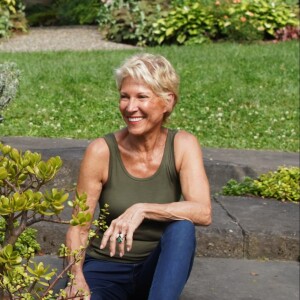
Thursday Nov 30, 2023
Episode 97: What is GardenFit
Thursday Nov 30, 2023
Thursday Nov 30, 2023
GardenFit is the hit national public television series with co-hosts and executive producers Madeline Hooper and Jeff Hughes. A first-of-its-kind series, GardenFit is a fusion of destination, gardening, and self-care, teaching viewers how to take care of their body while taking care of their garden. On the television show, you can tour gardens across America and learn gardening tips and techniques to avoid stress and injury.
Madeline Hooper, who lives in Columbia County in New York State, joins the Nature Calls: Conversations from the Hudson Valley podcast with tips on how to garden safely by using your body correctly. Before devoting herself wholeheartedly to gardening, she forged an extensive career in public relations, specializing in marketing. But her talents extend to many forms of physical activity including tennis, ballroom dancing and gardening. In her spare time, she also volunteers at the Berkshire Botanical Garden where she is also a Vice-Chair.
As we all know, gardening is a great activity for both the mind and the body. Madeline offers many suggestions to garden safely. She suggests dividing garden tasks into 30-minute chunks to avoid exhausting any one muscle group. She also advises that we all learn to be ambidextrous so that we work both sides of our bodies equally- not just our dominant side. Putting one foot in the direction you are bending will help with balance and protect your knees. Squatting when bending down also protects the knees as long as you don’t let your knees go beyond your toes. To protect your back, make sure to use your hips to lift items. Posture is also very important in and out of the garden. She encourages everyone to move your shoulder blades downward towards the pockets of your jeans. This raises the chest and puts you into a more aligned posture.
There is a lot to absorb in this episode while you also get a sneak preview of what’s coming in Season Two of the television series, Garden Fit. Enjoy!
Hosts: Tim Kennelty and Jean Thomas
Guest: Madeline Hooper
Photo from: Madeline Hooper
Production Support: Linda Aydlett, Deven Connelly, Teresa Golden, Xandra Powers, and Annie Scibienski
Resources
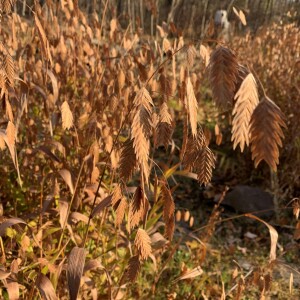
Thursday Nov 23, 2023
Episode 96: Farming Trends
Thursday Nov 23, 2023
Thursday Nov 23, 2023
Have you wondered about the state of agriculture in the Hudson Valley? Or what New York farmers are focused on now? Or how they manage for regenerative and/or climate smart farming? If so, we have a great episode for you!
Join Christian Malsatski, CCE Agricultural Program Leader for Columbia, Greene and Ulster Counties on a wide-ranging discussion on Farming Trends in the Hudson Valley. Christian has over 15 years of experience in agricultural research and education roles in Texas, Florida and Wisconsin with a focus on field crops, soil science, beef cattle/livestock and urban agriculture. He designs, organizes and delivers programs serving agricultural producers/practioners and State/County officials and workers in many facets or agricultural endeavors.
Christian talks about the growing interest in agri-tourism and the diversification of many farm operations to include both crops and livestock. He explores the local grain economy as a community of farmers, millers & processors, distributors, bakers, maltsters, chefs, livestock owners, and others who eat and use grains. They communicate and interact together to provide and consume local grains, facilitating each other’s success and good health. This includes relationship of many farmers to New York craft breweries.
Farmers today face ongoing threats from deer damage as well as from invasive pests like the spotted lantern fly. Learn why soil health is so important to the future of productive farms and how rotational schedules help.
This episode provides insight into the challenges faced by today’s farmers and how they are adapting to thrive in today’s economy.
Hosts: Tim Kennelty and Jean Thomas
Guest: Christian Malsatski
Photo By: Jean Thomas
Production Support: Linda Aydlett, Deven Connelly, Teresa Golden, Xandra Powers, and Annie Scibienski
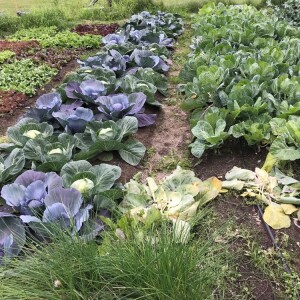
Thursday Nov 16, 2023
Episode 95: Regenerative Agriculture
Thursday Nov 16, 2023
Thursday Nov 16, 2023
Did you know that half of the world’s agricultural land is degraded? According to the World Economic Forum, this leads to farm productivity losses and is a risk to food security in the future. They define Regenerative Agriculture as a focus on improving the health of the soil that has been degraded by the use of heavy machinery, fertilizers, and can restore agricultural land and pesticides used in intensive farming. When soil is healthy, it produces more food and nutrition, stores more carbon and increases biodiversity – the variety of species. Healthy soil supports water, land and air environments and ecosystems through natural processes including the fertilization of plants.
Stone Barns Center for Food and Agriculture, located in Tarrytown (Westchester County), NY is a nonprofit farm, education and research center with a mission to catalyze an ecological food culture in the Northeast. Since 2004, they have been working to innovate ecological farming practices and mindful food choices that benefit human health, strengthen communities, and protect the environment. Their Hudson Valley campus, shared with restaurant partner Blue Hill at Stone Barns, is a living laboratory for interdisciplinary research experiments where farmers, chefs, diners, educators, and artisans come together to push the boundaries of sustainable farming and eating.
Laura Perkins is horticulturalist at Stone Barns Center where she tends the formal gardens and develops and maintains the surrounding landscape while supplying Blue Hill with foraged edible foods, giving visitors opportunities for sensory immersion in the landscape, and enhancing wildlife habitat and the ecological resilience of the land. She joins the podcast, Nature Calls: Conversations from the Hudson Valley, with fascinating insights into the work performed at the Stone Barns Center and how it is helping farmers and residents better understand successful ways to regenerate soils and farming practices.
Hosts: Tim Kennelty and Jean Thomas
Guest: Laura Perkins
Photo by:
Production Support: Linda Aydlett, Teresa Golden and Annie Scibienski
Resources
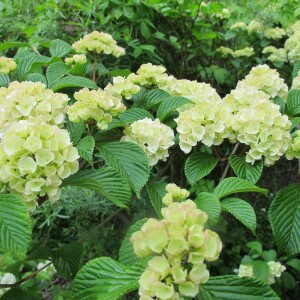
Thursday Nov 09, 2023
Episode 94: Brassicas, Viburnums and Shovels
Thursday Nov 09, 2023
Thursday Nov 09, 2023
Dig into this podcast episode that includes comfort food cooking with brassica vegetables, insights into both native and non-native viburnums, and helpful information on various types of garden shovels,
Annie Scibienski, a Master Gardener Volunteer, starts us off with a new From Patch to Plate segment about cooking with cabbage, cauliflower, and broccoli. Awaken your taste buds with her descriptions of recipes involving these popular vegetable varieties.
Viburnums are a very admired and fast-growing flowering landscape shrubs or small trees with a large number of cultivars available. Bloom times span from early spring through June, followed by attractive fruit and great fall foliage. However, not all viburnums are created equal. Learn about the differences between the native and non-native species from Master Gardener Tim Kennelty on Good Plant/Bad Plant.
Have you ever stopped to think about what a groundbreaking invention the shovel is? Annie Scibienski returns with a discussion about different types of shovels on The Grateful Shed. The shovel, spade, and trowel are featured with descriptions of the benefits of each type and their uses in the garden.
We hope you find some interesting bits of new knowledge on this episode of Nature Calls: Conversations from the Hudson Valley.
Hosts: Tim Kennelty and Jean Thomas
Guests: Tim Kennelty and Annie Scibienski
Photo by: Tim Kennelty
Production Support: Linda Aydlett, Teresa Golden and Annie Scibienski
Resources
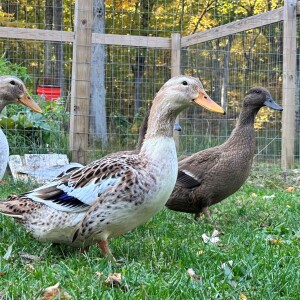
Thursday Nov 02, 2023
Episode 93: Backyard Ducks
Thursday Nov 02, 2023
Thursday Nov 02, 2023
Many people have thought about raising chickens and most of them have been successful doing so. But have you given any thought to raising ducks?
All ducks belong to the Anseriformes order, a biological group that contains ducks, geese and swans. Ducks are generally smaller and shorter-necked than either swans or geese. They have many economic uses, being farmed for their meat, eggs, and feathers (particularly their down).
The head and wing feathers of drakes (males) are more colorful than in females, with male ducks typically having larger heads. Ducks generally only have one partner at a time, although the partnership may only last one year. Ducks don't use nesting boxes or roosting bars. They are perfectly content to bed down in straw on the floor of a chicken coop or shed or other secure structure and then will make their own nest in a corner to lay their eggs in.
Ducks do have predators. Nests and ducklings can be raided by land-based predators such as foxes, or large birds, such as hawks or owls. While people may allow them to free range during the day, they really need to be locked into a coop or other strong structure at night.
Backyard Ducks don’t need a pond and can be perfectly happy with a kiddie pool. They do need a water source deep enough to submerge their heads into to help them swallow their food. Ducks eat grasses, aquatic plants, fish, insects, small amphibians, and worms. Ducklings should only be fed un-medicated feed. But bear in mind that ducks can be messy. They tend to make a water mess around their tub, as they go back and forth from the feed to the water, wetting the feed in their mouth with the water to help them swallow it.
Ducks can be wonderful backyard birds to raise as you enjoy their eggs as well as their personalities. Join Cathy Bruce on Nature Calls: Conversations from the Hudson Valley to learn more!
Hosts: Tim Kennelty and Jean Thomas
Guest: Cathy Bruce
Photo by: Cathy Bruce
Production Support: Linda Aydlett, Teresa Golden, Annie Scibienski

